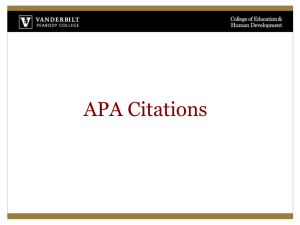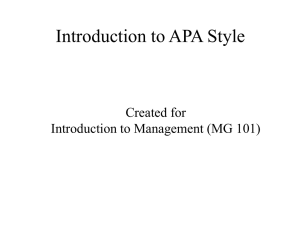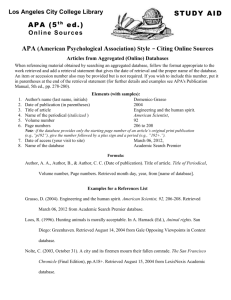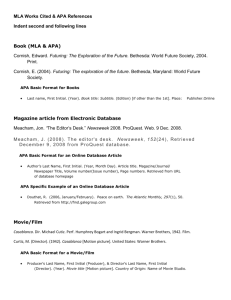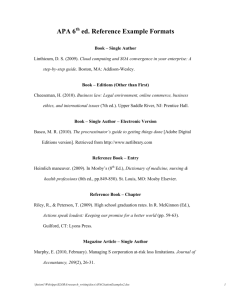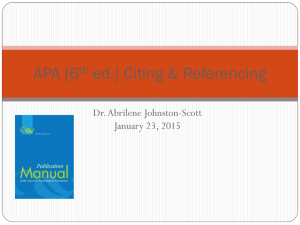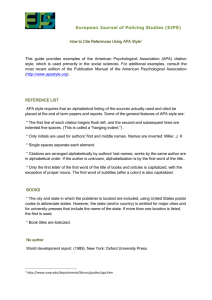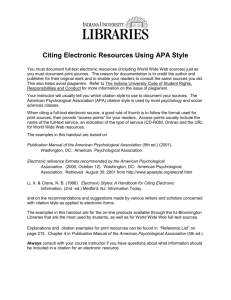Classroom management
advertisement
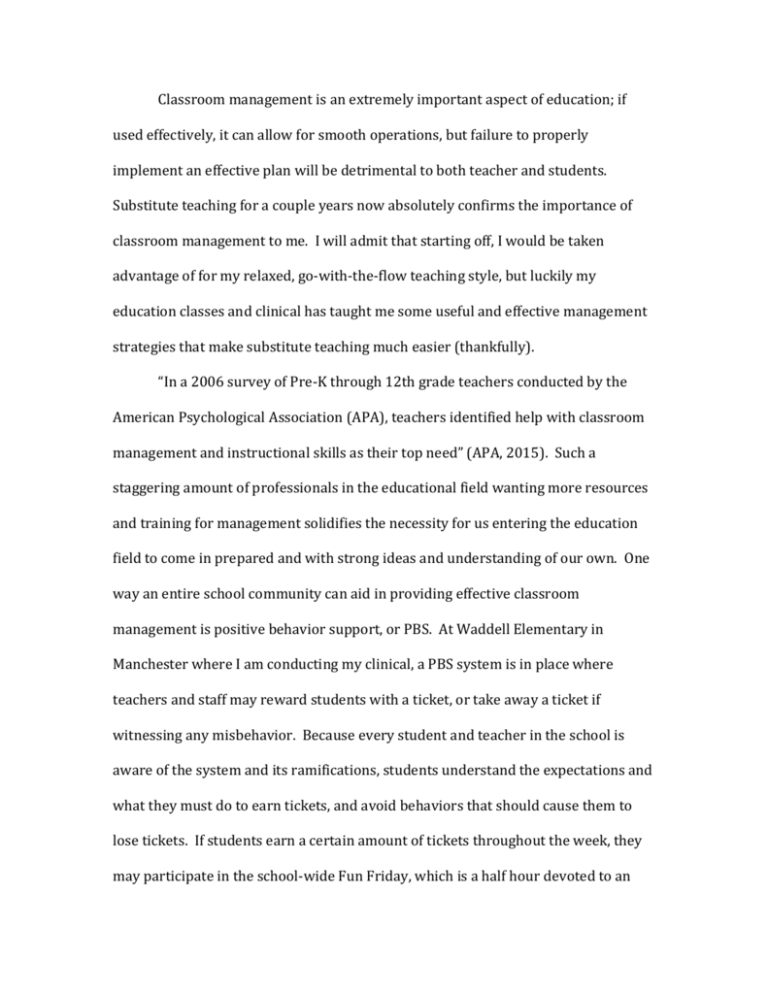
Classroom management is an extremely important aspect of education; if used effectively, it can allow for smooth operations, but failure to properly implement an effective plan will be detrimental to both teacher and students. Substitute teaching for a couple years now absolutely confirms the importance of classroom management to me. I will admit that starting off, I would be taken advantage of for my relaxed, go-with-the-flow teaching style, but luckily my education classes and clinical has taught me some useful and effective management strategies that make substitute teaching much easier (thankfully). “In a 2006 survey of Pre-K through 12th grade teachers conducted by the American Psychological Association (APA), teachers identified help with classroom management and instructional skills as their top need” (APA, 2015). Such a staggering amount of professionals in the educational field wanting more resources and training for management solidifies the necessity for us entering the education field to come in prepared and with strong ideas and understanding of our own. One way an entire school community can aid in providing effective classroom management is positive behavior support, or PBS. At Waddell Elementary in Manchester where I am conducting my clinical, a PBS system is in place where teachers and staff may reward students with a ticket, or take away a ticket if witnessing any misbehavior. Because every student and teacher in the school is aware of the system and its ramifications, students understand the expectations and what they must do to earn tickets, and avoid behaviors that should cause them to lose tickets. If students earn a certain amount of tickets throughout the week, they may participate in the school-wide Fun Friday, which is a half hour devoted to an extra recess or free time for students. PBS programs also include “individualized interventions (called indicated or tertiary intervention) for students who need very focused and more intense services for problematic and disruptive behavior. Tertiary interventions are typically used with students who have a more severe range of disruptive behaviors” (APA, 2015). Greg Carabillo, the first grade teacher that I am conducting my clinical with, has two students in his classroom that adhere to a tertiary intervention. At the end of each period, the teacher evaluates these students to make sure that they are following the school rules, such as “staying on task” or “keeping body and objects to oneself”. According to Lesson Plans Inc (2007-2012), one of the top ten rules for classroom management is using a seating chart. Mr. Carabillo advised me to feel out which students are chatty or disruptive, and who is shy and quiet, and mix those students while comprising a seating chart. Those who are lower functioning in ability or have a significant behavior problem should be seated up in the front of the room. “Students in the front and center of your room will receive the most eye contact from you. If you want to keep a close eye on a student, put them in the front of the room” (Lesson Plans Inc, 2007-2012). Mr. Carabillo also said it is ideal to seat students in a cluster of four. This allows for cooperative learning, as well as equal partners and making sure each student has a buddy for “turn and talk” or “pairshare” exercises. “Working together lets students get their questions answered by someone who is not going to grade them. It lets students talk and get to know each other during class” (Lesson Plans Inc, 2007- 2012). Not only does collaborative learning allow for a constructivist style classroom where children are in charge of their own knowledge, it allows students to form relationships with their peers and trust one another to help them if needed. In turn, this increases the overall classroom morale and ensures the classroom climate is a positive one for all children to feel safe and comfortable with one another. Thomas Friedman states in his novel, The World is Flat, “The best companies are the best collaborators. In the flat world, more business will be done through collaborations within and between companies, for a few simple reasons: The next layers of value creation, whether in technology, marketing, biomedicine, or manufacturing, are becoming so complex that no single firm or department is going to be able to master them alone” (Friedman, 2006, p. 439). In order to be successful in society today, students must master the art of working with others in order to achieve a larger goal and cooperative learning hones that skill. “The other key element of cooperative learning, individual accountability, refers to the need for each member of the team to receive feedback on how his or her personal efforts contribute to achievement of the overall goal” (Dean, Hubbell, Pitler, & Ross, 2012, p. 37). Mr. Carabillo stated that each student of the group has a job he or she is responsible for, such as messenger or note-taker, and holding students accountable for their responsibility helps teach them the importance of effort and resilience. Student accountability is also an important component of establishing effective classroom management. If students are aware of the expectations in the classroom and the consequences for not following those expectations, then there is no surprise for a student’s punishment for not adhering to those rules (Foley, National Education Association, 2012-2014). At Waddell, students are aware of the consequences for breaking both the classroom and school-wide rules and are not surprised if a teacher asks them for a ticket for misbehaving. Generating student interest and engagement is crucial for classroom management practices. If students are involved and want to learn more about the subject matter, they are more likely to stay on task. “Individuals are engaged by information and activities that are relevant and valuable to their interests and goals. This does not necessarily mean that the situation has to be equivalent to real life, as fiction can be just as engaging to learners as non-fiction, but it does have to be relevant and authentic to learners’ individual goals and the instructional goals” (National Center on Universal Design for Learning, 2014). Producing examples that are relevant to the assignment but also relate to a student’s interests helps to engage and develop a better understanding of the expectations for that specific assignment. Also, by consistently reminding students of the goal or objective of the assignment, it will help re-align their focus and encourage them to keep putting in effort. Students from a culturally and linguistically diverse background require a teacher to be a master at classroom management strategies. “Educators need to be aware of their biases and own them, despite their subtle and almost invisible natures. Educators who are able to do this can understand that while their experiences are their realities, the same realities do not exist for all of their students” (Cramer & Bennett, 2015, p. 19). Research has indicated that the closer a student feels to their teachers and peers is strongly correlated to their motivation, emotional wellness, and engagement (Wang & Holcombe, 2010). Educators need to realize students from a very diverse background from their own may require different strategies to satisfy their unique needs. “Teachers should take the time to learn about students’ family and home life, as well as the in which they live” (Cramer & Bennett, p. 21). Doing this not only helps the student feel cared for and included, it also is helpful to the teacher in knowing who to reach out and contact should a problem occur that requires outside assistance. “Teachers who establish and maintain high-quality, trusting relationships with students can draw on their history of positive interactions in order to address classroom management challenges as they arise. In contrast, teachers regularly engaged in conflict with students are less able to respond effectively to classroom disruptions” (Jones, Bailey, & Jacob, 2014, p. 20). Effective classroom management is an imperative aspect of a positive teaching experience and providing a positive educational experience to students. By becoming aware of different strategies and implementing them in the classroom, it guarantees a seamless school day for everyone present. References Carabillo, G. (2015). Waddell Elementary School. CAST (2011). Universal Design for Learning Guidelines version 2.0. Wakefield, MA. Retrieved from: http://www.udlcenter.org/aboutudl/udlguidelines/principle3#principle3_g7 Cramer, E.D., & Bennett, K.D. (2015). Implementing culturally responsive positive behavior interventions and supports in middle school classrooms. Middle School Journal, 46 (3), 18-24. Dean, C., Hubbell, E., Pitler, H., & Stone, B. (2012). Classroom Instruction that Works. Denver, CO: McREL. Foley, D. (2012-14). 6 Classroom management tips every teacher can use. National Education Association. Retrieved from: http://www.nea.org/tools/51721.htm Friedman, T. L. (2005). The world is flat: A brief history of the twenty-first century. New York: Farrar, Straus and Giroux. Jones, S.M., Bailey, R., & Jacob, R. (2014). Social-emotional learning is essential to classroom management. Phi Delta Kappan, 96 (2), 19-24. Kratochwill, T. American Psychological Association (2014). Classroom Management. Retrieved from: http://www.apa.org/education/k12/classroommgmt.aspx Lesson Plans Inc (2007-2012). Classroom Management Strategies. Collaborative Learning. Retrieved from: http://www.lessonplansinc.com/classroom_management_collaborative_learning.ph p Wang, M.T., & Holcombe, R. (2010). Adolescents’ perceptions of school environment, engagement, and academic achievement in middle school. American Educational Research Journal, 47 (3). 633-662.

